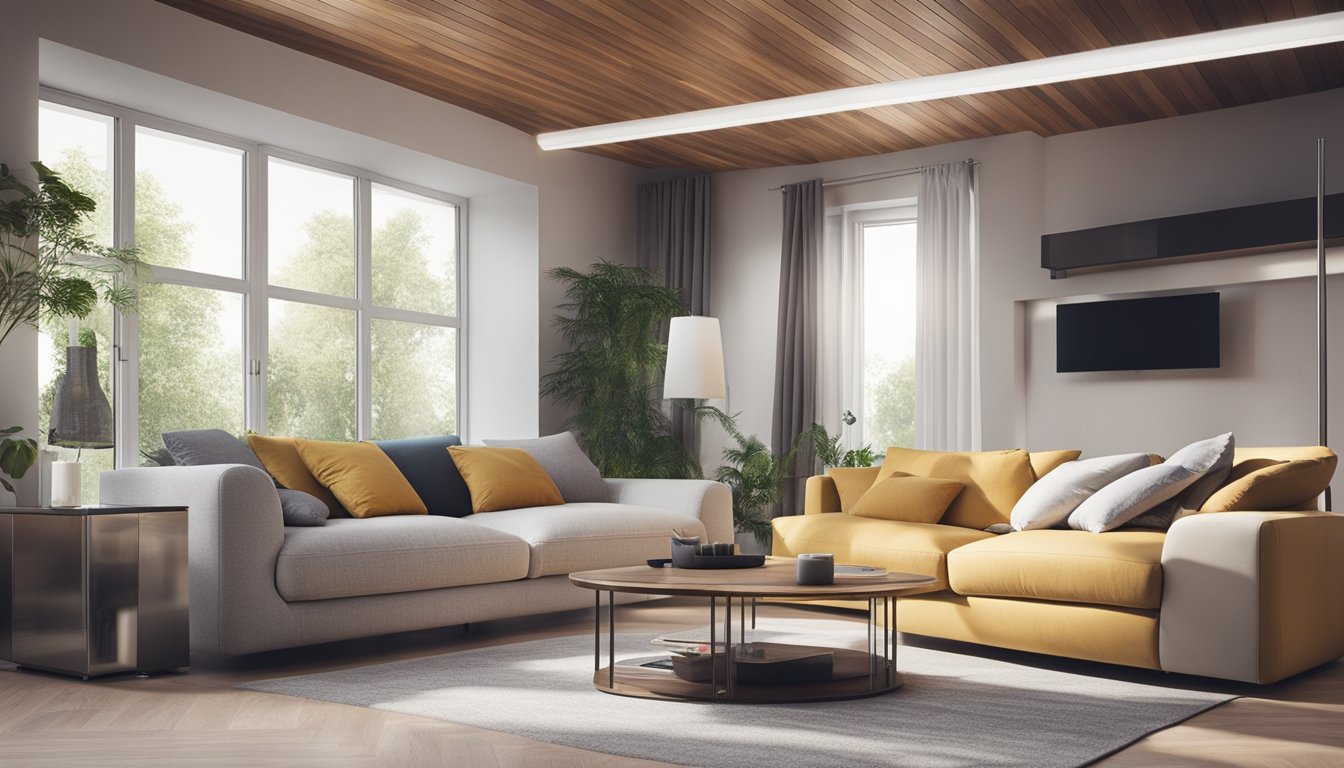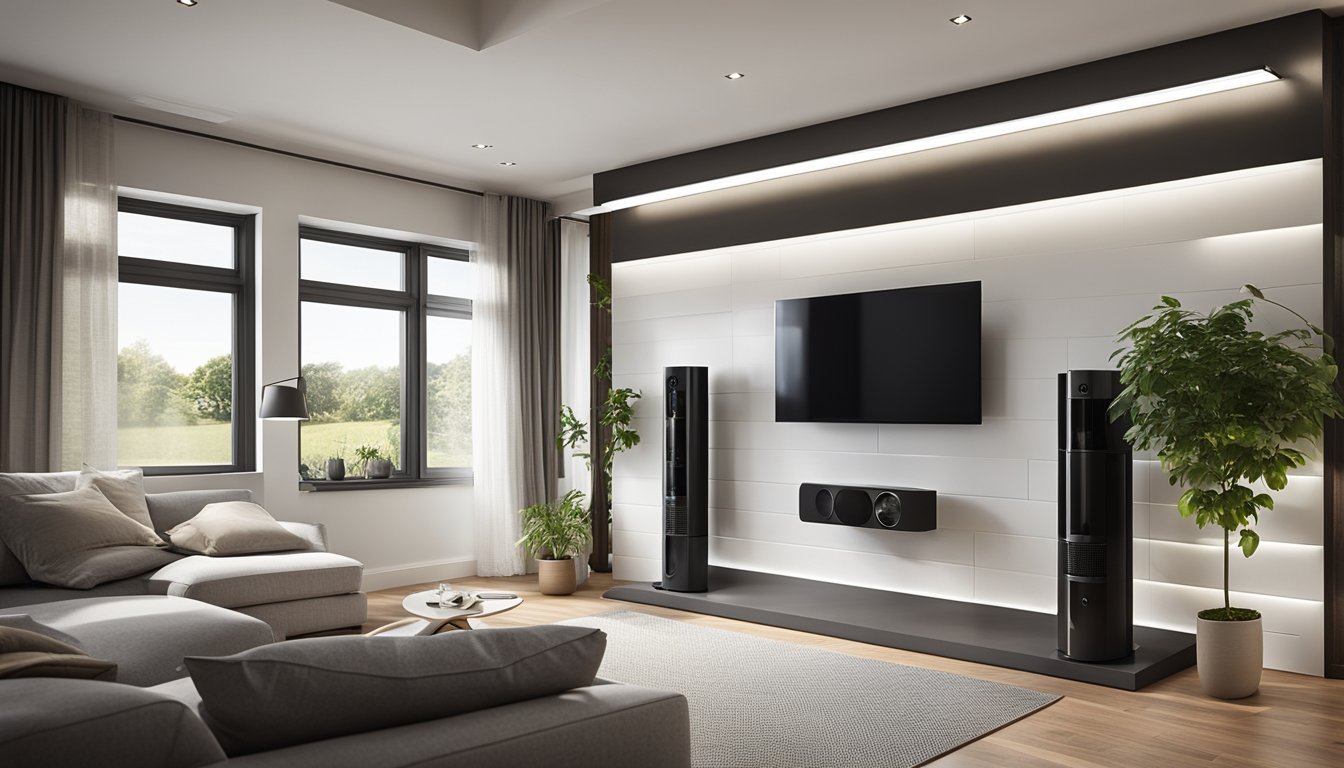Late updated: 16 Aug 2024 14:08
Written by: Eleanor Hartman
Home Energy-Efficient Ventilation Solutions In The UK: Top Choices for Sustainable Living
When it comes to improving the comfort and energy efficiency of our homes in the UK, ventilation plays a significant role. Proper home ventilation ensures an optimal balance of air quality and energy savings, contributing to healthier living environments and reduced energy costs. Efficient ventilation systems can significantly reduce energy consumption while maintaining excellent indoor air quality.

Energy-efficient ventilation solutions, such as mechanical extract ventilation (MEV) and heat recovery ventilators (HRVs), have become popular in modern homes. These systems not only promote the circulation of fresh air but also recover energy that would otherwise be lost, enhancing overall energy performance. For homes with loft spaces, Positive Input Ventilation (PIV) is a viable option, particularly for improving air circulation in existing structures.
As building regulations in the UK continue to tighten, homeowners must adopt smart ventilation technologies tailored to various needs. Implementing state-of-the-art systems like MVHR (Mechanical Ventilation with Heat Recovery) ensures compliance with Part F of the building regulations, guaranteeing a sustainable and energy-efficient home environment.
Key Takeaways
- Efficient ventilation systems can cut energy usage while maintaining air quality.
- Various options like MEV, HRVs, and PIV cater to different home requirements.
- Adopting smart ventilation solutions ensures compliance with UK regulations.
Understanding Home Ventilation and Energy Efficiency
Effective home ventilation and energy efficiency are critical for maintaining indoor air quality and ensuring comfort in UK homes. Balancing the need for fresh air with energy conservation requires thoughtful solutions.
The Importance of Effective Ventilation
Effective ventilation is essential to maintaining indoor air quality. In well-insulated homes, without adequate ventilation, stale air can accumulate, leading to moisture issues and potential health risks. We must ensure a consistent supply of fresh air to mitigate these problems.
Mechanical ventilation systems play a pivotal role in this process. They help regulate airflow and remove pollutants. We often use these systems in conjunction with heat recovery options to balance energy efficiency and indoor comfort.
Basics of Heat Recovery Systems
Heat recovery systems capture warmth from outgoing stale air and transfer it to incoming fresh air. This process reduces the energy needed to heat the home, combining efficiency with comfort.
Mechanical ventilation with heat recovery (MVHR) units are commonly used. They provide a consistent air exchange while preserving heat, essential for reducing energy costs. By integrating these systems, we enhance both ventilation and energy efficiency in our buildings.
Key components include:
- Heat exchanger
- Ventilation ducts
- Fans to control airflow
These solutions ensure our homes remain energy-efficient without compromising on air quality.
Implementing Energy-Efficient Ventilation Solutions

Effective energy-efficient ventilation reduces energy consumption and improves indoor air quality while adhering to UK building regulations. Understanding the differences between systems, knowing the regulatory requirements, and planning thoroughly ensures cost-effective and sustainable installations.
Comparing Ventilation Systems
There are several types of ventilation systems, each with its benefits and drawbacks. Exhaust ventilation systems remove the stale air from the house, while supply systems bring fresh air inside.
Balanced systems offer a middle ground by providing both exhaust and supply functions. Mechanical Ventilation with Heat Recovery (MVHR) is a popular energy-efficient system. It recovers heat from the outgoing air and uses it to warm the incoming air, reducing heating costs and our carbon footprint.
Energy recovery systems can be more expensive upfront but offer significant cost savings in the long term. Choosing the right system depends on factors such as house size, budget, and specific energy goals.
Ventilation and Building Regulations in the UK
UK building regulations mandate minimum ventilation standards to ensure indoor air quality and energy efficiency. These regulations are outlined in Part F of the Building Regulations.
A professional ventilation installer must ensure that systems meet these requirements. For new builds, integrating energy-efficient solutions from the design phase is critical. When renovating, retrofitting systems to comply with regulations can also improve energy performance.
Regulations cover aspects such as airflow rates, system types, and equipment standards. Compliance not only ensures legal adherence but can also enhance property value and reduce energy bills.
Planning and Installation Considerations
Planning for ventilation installation involves evaluating the building design, size, and existing infrastructure. Engaging with a qualified ventilation installer early in the process is crucial.
During the planning phase, we must consider factors such as ductwork layout, noise levels, and maintenance needs. Sustainable architecture principles should guide the design and installation to maximise energy efficiency.
The installation process itself can vary in complexity. For new homes, integrating the system seamlessly into the building fabric is ideal. For existing homes, retrofitting may be required, which could involve more specialised solutions and additional costs.
Energy-efficient ventilation solutions, while sometimes costlier to install, offer long-term benefits through reduced energy consumption and improved indoor air quality. This contributes to lowering our carbon footprint and achieving cost savings.
Frequently Asked Questions

Energy-efficient ventilation solutions significantly impact energy savings and indoor air quality. Below, we address common questions about Mechanical Ventilation with Heat Recovery (MVHR) systems and other energy-efficient ventilation options in the UK.
What are the benefits of installing a Mechanical Ventilation with Heat Recovery (MVHR) system in UK homes?
MVHR systems significantly reduce heating costs by recycling heat from exhaust air. They also ensure a continuous supply of fresh, filtered air, which improves indoor air quality. Additionally, these systems help maintain a consistent indoor temperature, reducing the need for additional heating.
How does Mechanical Ventilation with Heat Recovery compare to other ventilation options in terms of cost and efficiency?
MVHR systems are generally more expensive upfront than simpler ventilation options like trickle vents or exhaust fans. However, they offer greater energy savings and superior air quality. Over time, the initial investment can often be recouped through reduced energy bills.
Can Mechanical Ventilation with Heat Recovery systems be used for cooling purposes in UK homes?
MVHR systems are primarily designed for heat recovery, not cooling. While they can help maintain moderate indoor temperatures by reducing excess heat, they are not a substitute for air conditioning. For effective cooling, additional systems may be required.
What are the key considerations when choosing an energy-efficient ventilation system for a UK residence?
Key factors include the size and layout of the home, the climate, and the specific energy goals. We should also consider the airtightness of the building and potential compatibility with existing heating and cooling systems. Consulting a professional can ensure the best fit for your needs.
How do energy-efficient ventilation systems contribute to improving indoor air quality in UK homes?
These systems provide a steady exchange of indoor and outdoor air, effectively reducing indoor pollutants like dust, mould, and pollen. They also manage humidity levels, mitigating conditions that promote mould growth. Using high-efficiency filters further enhances the quality of the indoor environment.
What are the estimated installation costs for an energy-efficient ventilation system in the UK?
Costs can vary widely depending on the system type and home size. Simple systems like trickle vents may be relatively inexpensive, while MVHR systems can range from £2,000 to £8,000, including installation. It's crucial to obtain detailed quotes tailored to the specific requirements of your home.